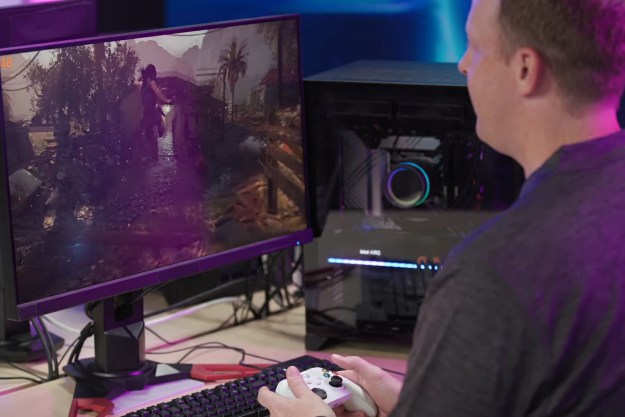AMD is said to be working on new resolution scaling technology that would be compatible with nearly all video games.
According to VideoCardz’s sources, the semiconductor giant is currently working on Radeon Super Resolution (RSR), which builds on the FidelityFX Super Resolution (FSR) technology AMD released earlier this year.

RSR, which is reportedly based on the FSR 1.0 algorithm, will not require developers to provide support to a certain game. Instead, the sampling tech will exclusively rely on the Radeon software driver. Any video game that offers a full-screen option will therefore be compatible with AMD’s Radeon Super Resolution.
AMD’s upcoming resolution technology is rumored for a launch next month, and will reportedly support both RDNA 1 and RDNA 2 architectures, which serves as the foundation for the company’s graphics cards.
It’s currently unclear whether RSR will support non-AMD GPUs from Intel and Nvidia. As Wccftech highlights, the latter’s Image Scaling technology is compatible with both AMD and Intel graphics cards via lossless scaling. However, if RSR is restricted to the AMD driver, it would only be compatible with AMD GPUs.
Image scaling solutions improve performance by reconstructing an image from a lower resolution, essentially putting less strain on the graphics card. If RSR were to come to fruition, it would be another development in upscaling technologies.
This specific field has become somewhat of an unusual avenue where the computing industry’s leading firms — Nvidia, Intel, and AMD — have developed upscaling technologies to compete against each other in the rapidly-growing PC gaming market.
Team Green has already established a strong foothold in the space with DLSS and DLSS 2.X. AMD countered with FSR, but Nvidia responded by updating its Image Scaling technology in November, subsequently providing support for practically all PC games.
Still, AMD’s FSR has been a success since its launch thanks to being the “fastest adopted software gaming technology in AMD history.” Intel, meanwhile, will enter the upscaling market with XeSS in anticipation of Team Blue’s upcoming Arc Alchemist graphics cards lineup. It will effectively combine the best features from both AMD and Nvidia’s aforementioned supersampling programs.
As the launch of RSR is reported to be due in January 2022, we expect AMD to officially introduce the upcoming tech next week at CES 2022. Alongside the presentation for its next-gen CPUs, the company is also expected to unveil a new range of GPUs at the event as well.
Editors' Recommendations
- It’s time to stop ignoring the CPU in your gaming PC
- The RTX 4090 is more popular on Steam than any AMD GPU
- I’ve used Intel CPUs for years. Here’s why I’m finally switching to AMD
- Gigabyte just confirmed AMD’s Ryzen 9000 CPUs
- All of the exciting new GPUs still coming in 2024




